Day1
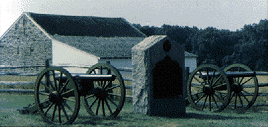
In June, Robert E. Lee
decided to take the war north. He planned to destroy the railroad bridge at
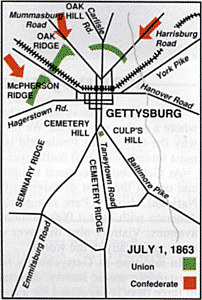
The Battle of Gettysburg
began on July 1 with Confederate troops attacking that Union cavalry division
on McPherson Ridge, west of town. Out-numbered, the Union forces managed to
hold, and even drive the Confederate army back, after the addition of John Reynold's Infantry division (and Reynold's
subsequent death on the front lines). They prevailed until afternoon, when they
were overpowered by additional southern troops, and driven back through town.
In the confusion, thousands of Union soldiers were captured before they could
rally on Cemetery Hill, south of town. Long into the night Union troops labored
over their defenses while the bulk of Meade's army arrived and took positions.
Day 2
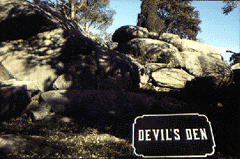
On July 2, the battle lines
were drawn up in two sweeping arcs. The main portions of both armies were
nearly a mile apart on two parallel ridges;
On the south, James Longstreet's thrust on the Union
left broke through D.E. Sickles' advance lines at the Peach Orchard, left the
Wheatfield and Plum Run (now known as Bloody Run) strewn with dead and wounded,
and turned the rocky area called the "Devils Den", at the base of
Little Round Top, into a shambles. Only a very observant General G. K. Warren
saved Little Round Top for the
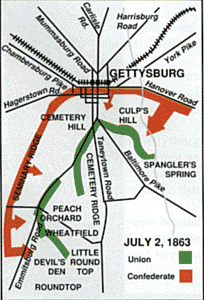
To the north, R. S. Ewell's
attack ultimately proved futile against the entrenched Union right on East
Cemetery Hill and Culp's Hill, even though they were able to take possession of
the southern slope of Culp's Hill on one occasion. The
frequent lack of effective communication would prove the downfall of the
Confederacy this day. If they had only known that they were only a few hundred
yards away from taking the Unions supply trains...if only Rodes
had moved through the streets of
Day 3
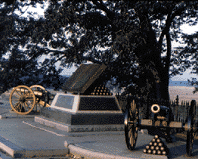
On July 3, Lee decided to
press the attack to the Union center on Cemetery Ridge. At 1 in the afternoon,
the southern artillery opened a bombardment that for a time engaged the massed
guns of both sides in a thundering duel for supremacy, but did little to soften
up the Union battle lines.
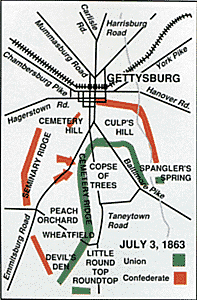
Then came the
climax of the